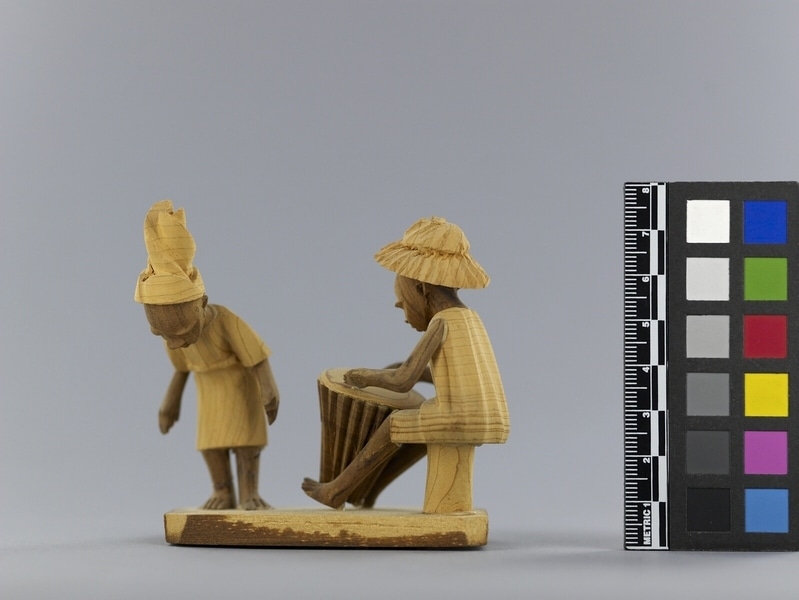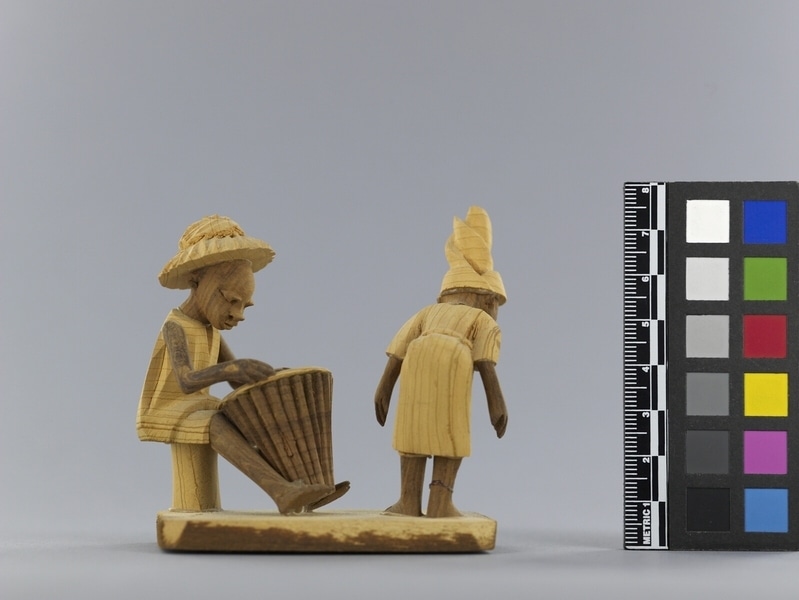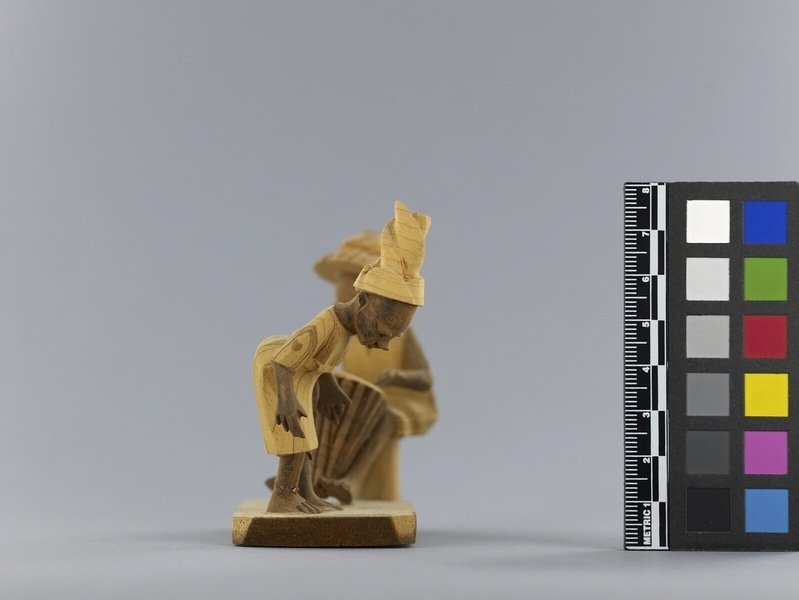Thorn Carving Item Number: Af395 from the MOA: University of British Columbia




Description
Two figures representing a man and a woman standing on a wooden base. The man is wearing a pleated brimmed hat, a sleeveless loose tunic, and knee-length pants. He is sitting on a small cylindrical stool, holding between his legs a conical one-headed drum with striated sides. His arms are bending, and his fingers are resting on the edge of the drumhead. The woman is wearing a large softly draped hat, and a knee-length dress with elbow-length sleeves. She is standing with her feet slightly apart, and her arms slightly bent. She is bending forward as if bowing from the waist. Hats, dress, shirt, drumhead, and stool are light yellow-brown. Skin and drum body are dark brown.
History Of Use
Thorn carvings are miniatures depicting scenes from Nigerian life. This type of carving began circa 1930. Thorns vary in size. They can be as large as 12.7 cm. long and 9.6 cm. wide. They are comparatively soft and easily carved. The light yellow-brown thorn and the dark brown thorn come from the Ata tree; the light red-brown thorn comes from Egun trees. The parts are glued together with viscous paste made from rice cooked with water. They are carved by men.
Cultural Context
craft; tourist art
Item History
- Made in Nigeria before 1972
- Collected during 1972
- Owned by Andrew Stewart and Jessie Stewart before February 8, 1980
- Received from Andrew Stewart (Donor) and Jessie Stewart (Donor) on February 8, 1980
What
- Name
- Thorn Carving
- Identification Number
- Af395
- Type of Item
- carving
- Material
- egun thorn, rice adhesive, atum thorn, wood and stain
- Manufacturing Technique
- carved and glued
- Overall
- height 8.0 cm, width 8.5 cm, depth 5.0 cm
Who
- Culture
- Yoruba
- Previous Owner
- Andrew Stewart and Jessie Stewart
- Received from
- Andrew Stewart (Donor) and Jessie Stewart (Donor)
Where
- Holding Institution
- MOA: University of British Columbia
- Made in
- Nigeria
When
- Creation Date
- before 1972
- Collection Date
- during 1972
- Ownership Date
- before February 8, 1980
- Acquisition Date
- on February 8, 1980
Other
- Item Classes
- carvings & sculpture
- Condition
- fair
- Current Location
- Case 98
- Accession Number
- 0590/0081